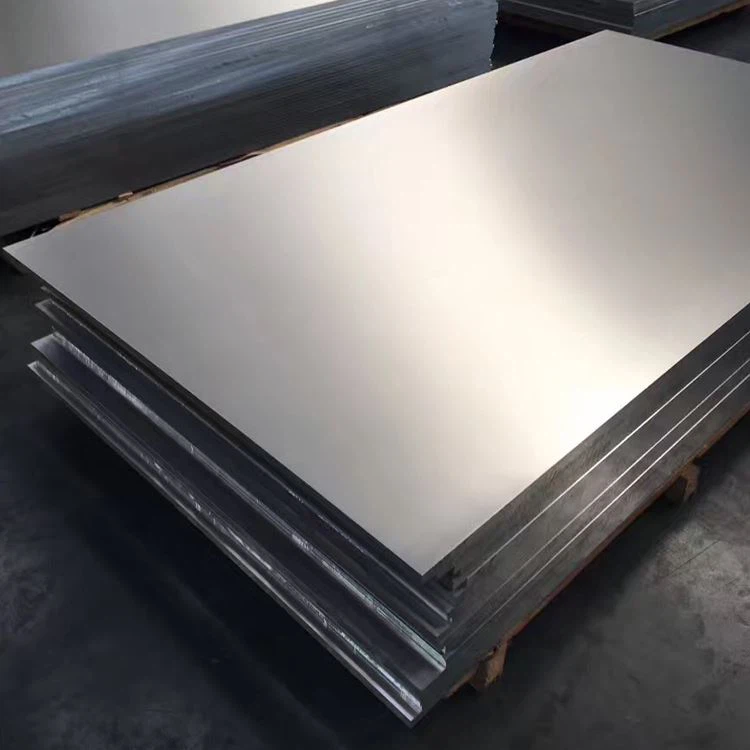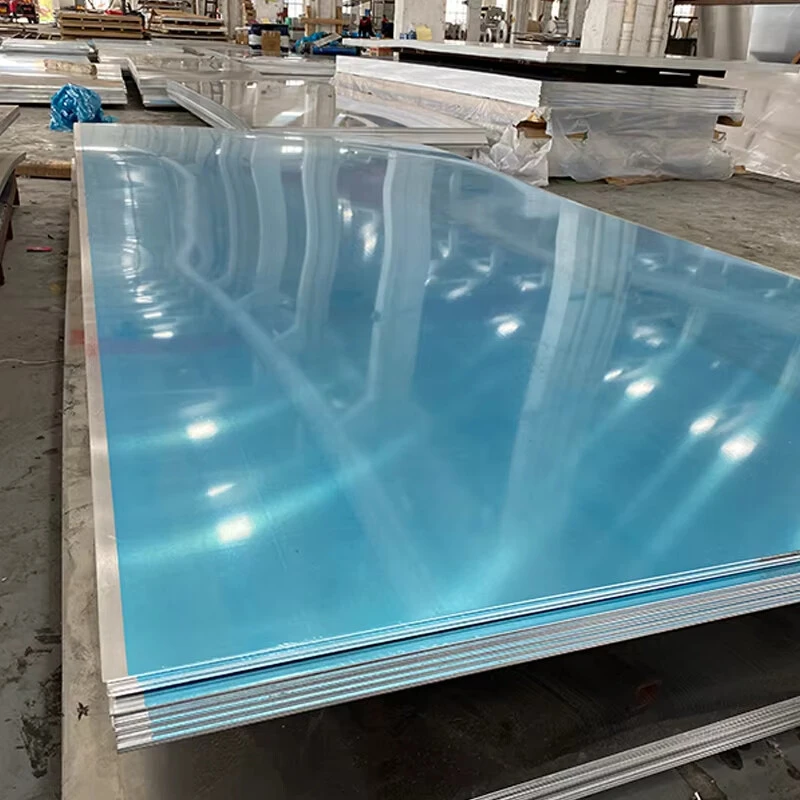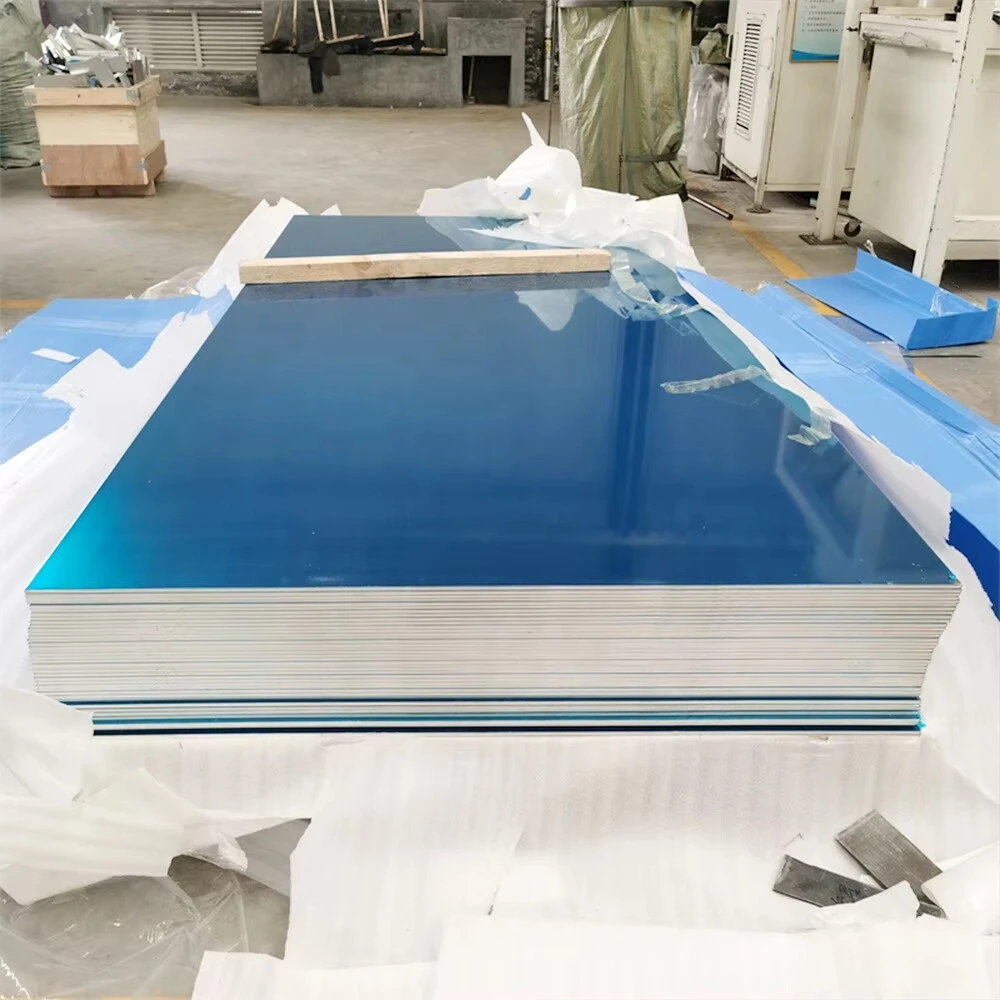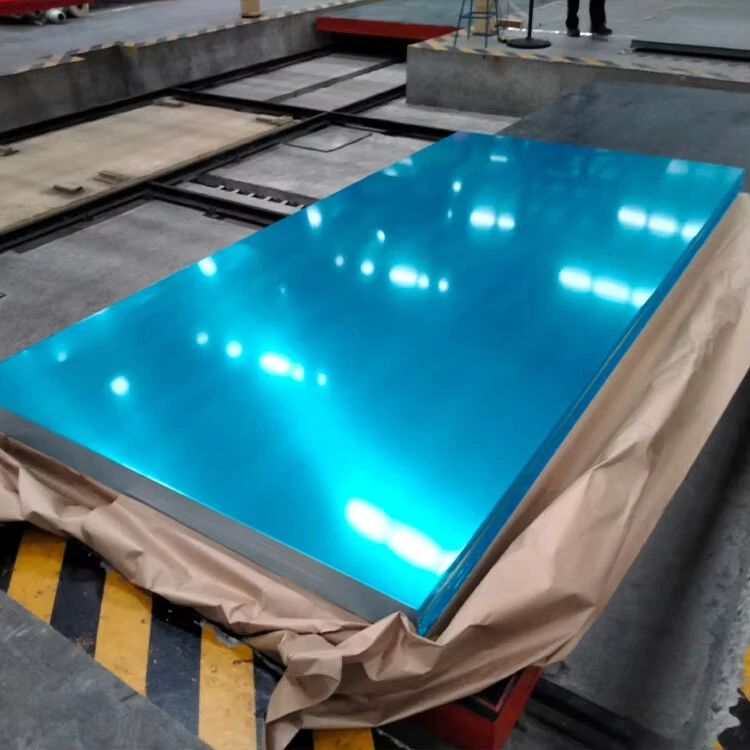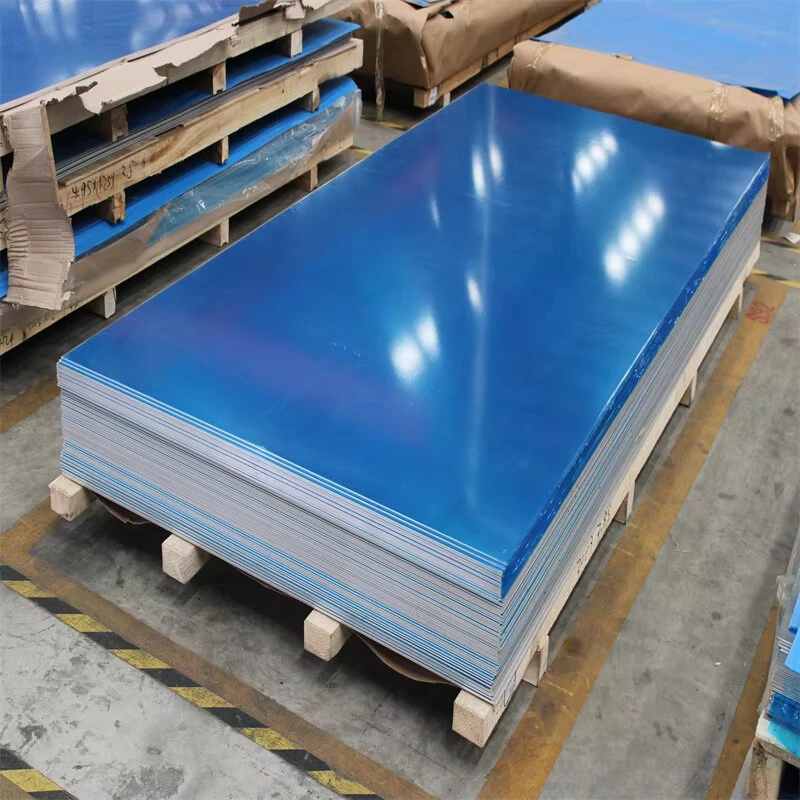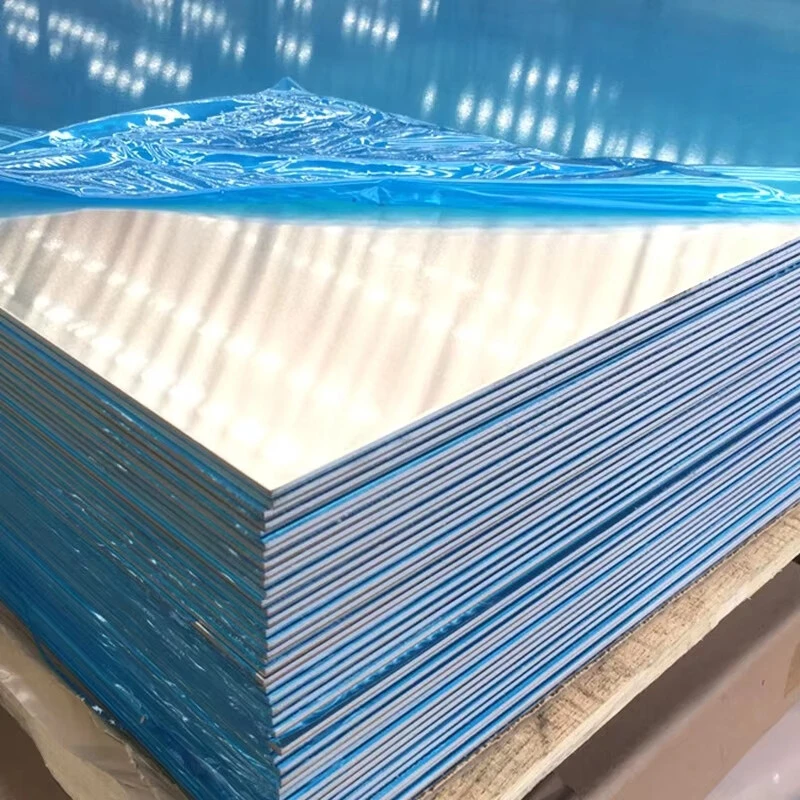1. Material Composition & Manufacturing Process
5052 aluminum alloy (ASTM B209, AMS 4002) features a magnesium-chromium alloying system optimized for corrosion resistance and formability:
Alloy Chemistry:
Magnesium (Mg): 2.2-2.8% (solution strengthening)
Chromium (Cr): 0.15-0.35% (corrosion resistance)
Iron (Fe): ≤0.40% max
Silicon (Si): ≤0.25% max
Copper (Cu): ≤0.10% max
Base Material:
Aluminum (Al): ≥96.7% (balance)
Trace Elements:
Zinc (Zn): ≤0.10% max
Manganese (Mn): ≤0.10% max
Titanium (Ti): ≤0.15% max
Advanced Manufacturing Process:
Continuous Casting: 680-720°C molten metal temperature
Hot Rolling: Initial reduction at 450-510°C
Cold Rolling: Final gauge reduction (30-80% reduction)
Stabilization Treatment:
H32: Slightly strain hardened + stabilized
H34: Medium strain hardened + stabilized
H38: Hard strain hardened + stabilized
Surface Treatment: Mill finish, brushed or embossed options
Certified to ASME SB209 and EN 485 standards with full traceability documentation.
2. Mechanical Properties by Temper State
| Property | O Temper | H32 Temper | H34 Temper | Test Standard |
| Ultimate Tensile Strength | 170-215 MPa | 230-265 MPa | 260-290 MPa | ASTM B557 |
| Yield Strength (Rp0.2) | 65-105 MPa | 195-215 MPa | 220-240 MPa | ASTM B557 |
| Elongation (%) | 18-25% | 8-14% | 6-10% | ASTM B557 |
| Shear Strength | 125-145 MPa | 155-175 MPa | 170-190 MPa | ASTM B831 |
| Bearing Strength | 310-350 MPa | 440-480 MPa | 480-520 MPa | ASTM E238 |
| Fatigue Strength (10⁷) | 90-115 MPa | 110-135 MPa | 120-145 MPa | ASTM E466 |
| Hardness (Brinell) | 47-52 HB | 60-68 HB | 68-75 HB | ASTM E10 |
| Impact Toughness | 25-30 J | 20-24 J | 15-20 J | ASTM E23 |
3. Heat Treatment & Microstructure Control
Strain Hardening Mechanism:
Cold rolling reduction determines final properties:
H32: 8-15% reduction
H34: 15-22% reduction
H38: 30-40% reduction
Stabilization Treatment: 120-160°C for 1-3 hours
Microstructural Characteristics:
Grain Size: ASTM 5-6 (40-60μm)
Dispersoid Phases:
Al₃Mg₂ particles (2-5nm)
Al₇Cr precipitates (10-30nm)
Dislocation Density:
O temper: 1×10⁸/cm²
H38 temper: 6×10¹⁰/cm²
Texture Components: Strong Brass {110}<112>
Recrystallization Fraction: Fully recrystallized in O temper
4. Dimensional Specifications for Plate
| Parameter | Standard Range | Precision Tolerance | Special Capabilities |
| Thickness | 0.5-150 mm | ±1-3% (varies by gauge) | Up to 200 mm |
| Width | 1000-3000 mm | ±5-15 mm | Up to 4500 mm |
| Length | 2000-12000 mm | ±10-30 mm | Up to 18,000 mm |
| Flatness | 5-15 mm/m | 1-3 mm/m (precision) | – |
| Surface Roughness | 0.4-1.2 μm Ra | 0.2-0.4 μm Ra (polished) | Mirror finish |
| Edge Condition | Mill edge | Squared or beveled | CNC edge profiling |
Forming Capabilities:
Stretch Forming: Up to 30% elongation
Deep Drawing: LDR of 1.8-2.2
Hydroforming: Complex shapes
Brake Forming: Minimum bend radius 1t (O temper)
Roll Forming: Continuous profiles
5. Corrosion Resistance Performance
| Environment | Performance Rating | Corrosion Rate | Protection Methods |
| Seawater Immersion | Excellent | <0.002 mm/year | Alodine 1200S conversion |
| Coastal Atmosphere | Excellent | 0.001-0.003 mm/year | Paint systems |
| Chemical Exposure | Good | 0.01-0.1 mm/year | PVDF coating |
| Automotive Salt Spray | Excellent | ASTM B117 Rating A | E-coat pretreatment |
| Stress Corrosion | Excellent | SCC threshold >50MPa | – |
Surface Treatment Options:
Mill Finish: Standard protective film
Anodizing: Decorative or hard coat
Powder Coating: Multiple color options
PVDF Coating: Superior weather resistance
Chromate Conversion: Alodine 600 series
Embossed Surfaces: Diamond or linear patterns
6. Machining & Fabrication Properties
| Operation | Tool Material | Recommended Parameters | Quality Output |
| Waterjet Cutting | High-pressure | 3500-4000 bar, 8-15 mm/min | ±0.1-0.3 mm |
| Laser Cutting | Fiber laser | 3-6 kW power, 5-20 m/min | Ra 3-8 μm |
| Routing | Carbide tools | 3000-5000 RPM, 1500-3000 mm/min | Burr-free edges |
| Punching | HSS tooling | 60-100 strokes/min | IT12 tolerance |
| Blanking | D2 tool steel | Clearance 8-12% material thick | Minimum 1.5t radius |
Fabrication Advantages:
Weldability: Excellent without preheat
Shearability: Low tool wear rate
Formability: High ductility in annealed state
Joinability: Compatible with all standard methods
Polishability: Excellent surface finishing characteristics
7. Welding & Joining Technologies
Optimal Welding Processes:
Gas Metal Arc Welding (GMAW):
Wire: ER5356 or ER5556
Shielding Gas: Argon or Ar+25%He
Tungsten Inert Gas (GTAW):
Electrode: EWTh-2 (2% thorium)
Gas Flow: 12-18 L/min
Resistance Spot Welding:
Pressure: 2.5-4.0 kN
Time: 0.2-0.5 sec
Specialized Joining Methods:
Adhesive Bonding:
Epoxy structural: 15-25 MPa
Methacrylate: 12-20 MPa
Mechanical Fastening:
Self-piercing rivets
Blind rivets
Clinching technology
Brazing Systems:
Aluminum-silicon filler metals
Furnace or torch brazing
8. Physical Properties for Engineering Design
| Property | Value | Design Significance |
| Density | 2.68 g/cm³ | Lightweight advantage |
| Young’s Modulus | 70.3 GPa | Stiffness in design |
| Poisson’s Ratio | 0.33 | Stress distribution |
| CTE (20-100°C) | 23.8 μm/m·°C | Thermal expansion |
| Thermal Conductivity | 138 W/m·K | Heat transfer capability |
| Electrical Conductivity | 35% IACS | Electrical applications |
| Melting Range | 605-650°C | Processing safety margin |
| Magnetic Permeability | <1.01 | Electromagnetic neutrality |
9. Quality Control & Certification
Comprehensive Testing Protocol:
Chemical Analysis: Optical emission spectroscopy
Mechanical Testing: Batch/lot certification
Corrosion Testing:
ASTM G67 for intergranular corrosion
ASTM G85 for salt spray
Non-Destructive Testing:
Ultrasonic scanning (ASTM B594)
Eddy current examination
Surface Quality Inspection:
Visual per ASTM B209
Profilometer measurement
Certification & Compliance:
ISO 9001:2015 Quality System
AS9100 Aerospace Certification
NADCAP Special Processing
RoHS & REACH Compliance
Marine Classification: ABS, DNV, LR
FDA Compliance for food contact
10. Industrial Applications & Handling
Primary Application Sectors:
Marine components and superstructures
Transportation flooring and panels
Architectural cladding systems
Chemical processing equipment
Food & beverage processing
Electrical enclosures
HVAC ductwork
Automotive body panels
Handling & Storage Protocols:
Protective film: PE or PET coating
Storage orientation: Vertical or flat
Stacking: Wood separators every layer
Lifting: Wide belt slings (>150mm)
Environmental control: <70% humidity
Packaging: Desiccant loaded systems
Transportation Requirements:
Weatherproof covering
Edge protection systems
Non-metallic blocking
Cradle supports for plates
ISO container specifications

